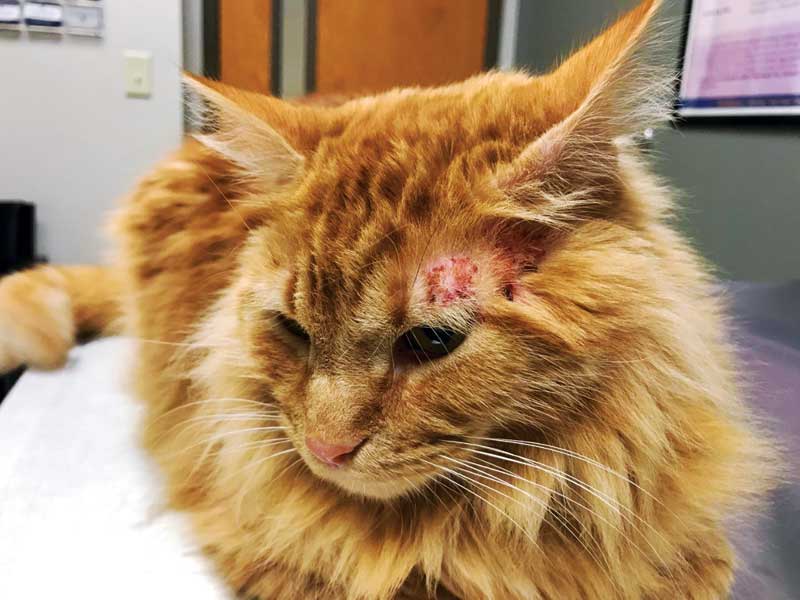
Unfortunately, allergies in cats are common. An allergy is actually an overreaction of the immune system (defense system) to a harmless stimulus. For example, this can be due to the immune system or natural barriers between the environment and the animal. The skin and intestinal wall are the primary defenses against external influences. When the intestinal wall and skin are not functioning correctly, allergens (substances that cause allergies) can easily penetrate deep into the body and trigger allergic reactions.
There are many different types of allergies, which can be divided into four main groups:
1) Flea Allergy
Flea allergy is an overreaction of the body to flea saliva. Even a few bites can cause a severe reaction, so just because a cat does not have fleas does not mean that it does not have a flea allergy!
2) Atopy
Atopy is a genetic overreaction to environmental allergens (substances in the air or environment). About 85% of cases are atopic. Examples include fleas, dust mites (house dust mites), pollen, and trees.
The first symptoms usually occur between 9 months and 4 years. Atopy can also develop seasonally, for example, an allergy to grasses that only bloom in the spring.
3) Food Allergy
A food allergy is an overreaction to an ingredient in a food. Approximately 10-15% of allergy sufferers have food allergies. This allergy can occur at any age, even in animals eating the same food for years! Many cats are allergic to proteins (components of meat).
In the past, beef and chicken proteins were commonly used. However, now that more types of proteins are processed as animal feed, such as lamb, fish, and chicken, allergies to more types of proteins have been found.
4) Contact Allergy
Such allergies occur only rarely. It is a localized reaction to something that comes in contact with the skin. Think of a neck reaction to a particular collar.
Allergy Symptoms in Cats
The main symptom of allergy in cats is itching. Face, ears (sometimes just ears!), paws, groin, and armpits are often affected. Because the skin is affected by the allergy and scratching, secondary dermatitis caused by bacteria and yeast usually occurs. This exacerbates symptoms. In addition, most cats then suffer from a more pungent odor, thickening of the skin, bald spots, and sometimes licking spots. Food allergies can also cause intestinal problems such as diarrhea and repeated flatulence.

Treatment of Allergies
The best way of decreasing cat allergies is to eliminate harmful allergens from home. You can remove ingredients from your cat’s diet to see if they are causing skin problems. When seasonal allergies are present, cats can be kept indoors, and fleas can be prevented using flea medicine.
The identification of the exact substance causing the cat’s allergy may take time. Your vet will run tests to find out the possible reasons. However, if your cat’s allergy is food-related, you might need to monitor his reaction to certain foods to identify which one is causing the issue. He may also recommend a diet with limited ingredients or a prescribed diet for cats with food allergies.
Keeping a clean, dust-free home and bathing your cat regularly can also help reduce allergy symptoms. Too many baths can dry out the skin. Ask your veterinarian which cat shampoo is best for your cat and how often you should wash and groom your pet.
If your cat’s allergies are toilet-related, gradually switch to a natural litter.
With your vet’s help and your patience, it is possible to identify the cause of your cat’s allergy and make it a mutual relief.
Share your thoughts with us in the comments below!





